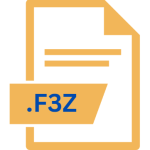.DD File Extension

DiskDoubler Archive
| Developer | Symantec |
| Popularity | |
| Category | Compressed Files |
| Format | .DD |
| Cross Platform | Update Soon |
What is an DD file?
The .DD file extension denotes a DiskDoubler Archive, a type of compressed file created by DiskDoubler, a file compression and archiving utility developed for the Macintosh operating system.
DiskDoubler was popular in the 1990s for its ability to reduce the size of files and free up disk space. This article explores the origin, history, file structure, advantages, disadvantages, conversion methods, and how to open .DD files across various operating systems.
More Information.
DiskDoubler was a pioneering utility in the realm of file compression for Mac OS, offering features that were quite advanced for its time.
It utilized a proprietary compression algorithm to reduce the size of files and folders, making it easier for users to manage their data.
The .DD file extension was used to identify archives created by DiskDoubler, which could contain one or more compressed files.
This format was particularly useful in an era when storage space was a premium and efficient file management was crucial.
As computing technology evolved and storage capacities increased, the demand for DiskDoubler and its .DD files diminished.
The rise of more advanced compression technologies and tools led to DiskDoubler’s decline in popularity, but the .DD format remains a part of computing history, representing an important step in the development of file compression utilities.
Origin Of This File.
DiskDoubler was developed by Casady & Greene, a company known for its software solutions for the Macintosh platform.
The tool was first released in the early 1990s, a period marked by the increasing need for efficient file management due to limited storage capacities on personal computers.
DiskDoubler was designed to address these challenges by compressing files and directories, thus enabling users to maximize the available disk space on their Mac systems.
File Structure Technical Specification.
The .DD file format is a proprietary archive format used by DiskDoubler. The file structure of a .DD archive typically includes:
- Header: Contains metadata about the archive, such as the version of DiskDoubler used to create it, the number of files contained, and their compressed sizes.
- Compressed Data Blocks: The core of the archive, consisting of the compressed versions of the files and folders. DiskDoubler’s proprietary compression algorithm is used to reduce the size of these data blocks.
- File Directory: A section that lists the contents of the archive, including filenames and their respective locations within the compressed data blocks.
DiskDoubler employed a compression algorithm that was efficient for its time but is considered outdated compared to modern compression methods. The format was optimized for Mac OS and worked well within the constraints of early personal computers.
How to Convert the File?
Converting .DD files to more modern formats involves extracting the contents of the archive and then recompressing them using contemporary tools. Here’s a general approach:
1. Extract the Contents:
- Use a vintage Macintosh computer with DiskDoubler installed to open and extract the contents of the .DD file. Alternatively, use an emulator that supports DiskDoubler.
- If you have access to a Mac with the old software, open DiskDoubler, load the .DD file, and extract the files to a regular directory.
2. Recompress with Modern Tools:
- Transfer the extracted files to a modern operating system.
- Use a contemporary compression utility, such as WinRAR, 7-Zip, or macOS’s built-in compression tools, to recompress the files into a modern format such as
.zipor.tar.gz.
This process ensures that the files are accessible using current technology and storage solutions.
Advantages And Disadvantages.
Advantages:
- Space Efficiency: DiskDoubler archives were effective in reducing file sizes, helping users save valuable disk space on early Macintosh systems.
- Ease of Use: DiskDoubler provided a user-friendly interface for compressing and decompressing files, making it accessible even to users with limited technical knowledge.
- Organizational Benefits: By compressing entire directories, users could manage large amounts of data more effectively.
Disadvantages:
- Proprietary Format: The .DD file format is proprietary and not widely supported by modern software, which limits its usability today.
- Obsolescence: Advances in file compression technology have rendered DiskDoubler and its compression methods outdated. Modern utilities offer more efficient compression algorithms.
- Compatibility Issues: Users attempting to access .DD files on contemporary systems may encounter compatibility issues due to the lack of support for the DiskDoubler format.
How to Open DD?
Open In Windows
- Windows does not natively support .DD files. You can use a classic Mac OS emulator or virtual machine that runs DiskDoubler to open and extract .DD files.
- Alternatively, if you can access a Mac with DiskDoubler, extract the files and then transfer them to Windows for further use.
Open In Linux
- Similar to Windows, Linux does not support .DD files natively. Use a classic Mac OS emulator or virtual machine to extract the files.
- Once extracted, the files can be used in Linux with modern compression tools.
Open In MAC
- If you have access to an older Mac running a version of Mac OS that supports DiskDoubler, you can open .DD files using the DiskDoubler application. Extract the files and convert them as needed.
- For newer Mac systems, consider using a classic Mac emulator like SheepShaver or Basilisk II to run DiskDoubler and access .DD files.













